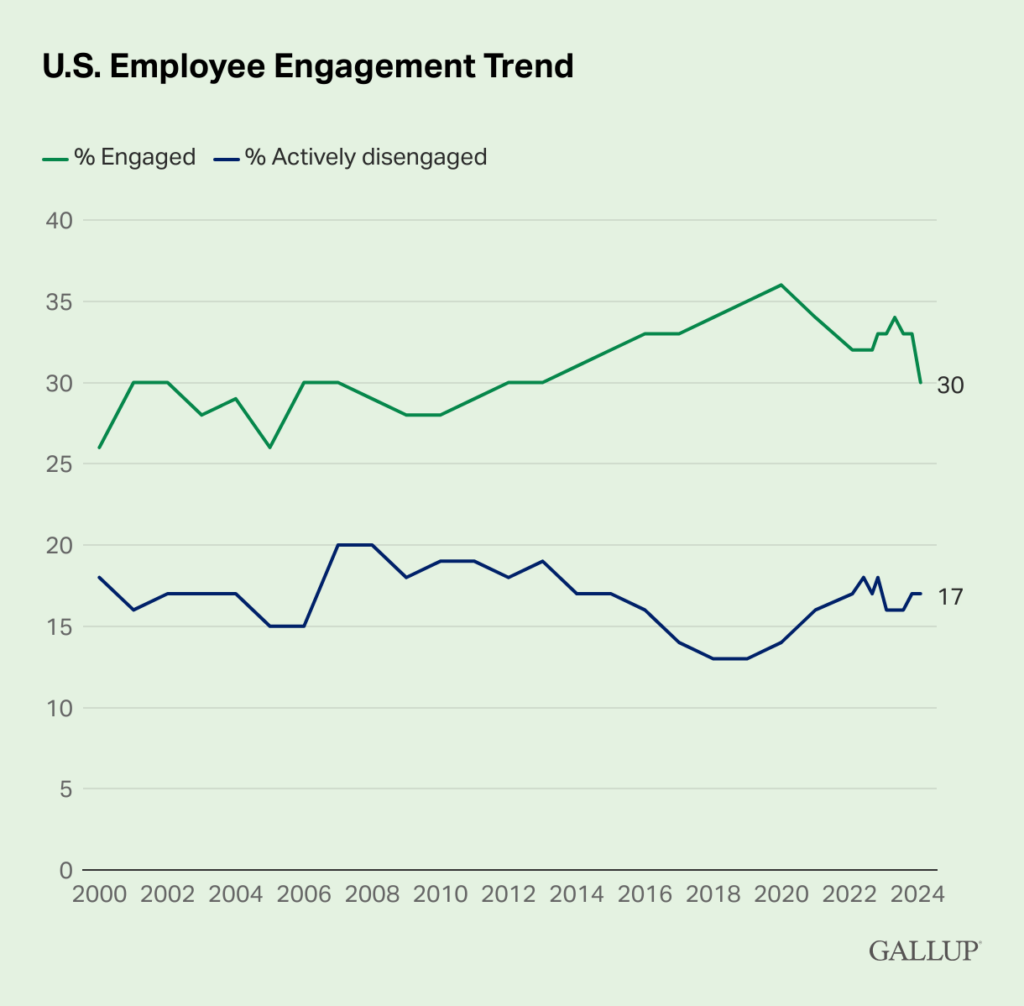In recent findings, Gallup highlights a concerning trend in the United States: employee engagement has plummeted to its lowest level since 2013. As of the first quarter of 2024, only 30% of employees, both full- and part-time, are highly engaged, meaning they feel actively involved and enthusiastic about their workplaces. This decrease continues from a previous year of falling engagement levels where workers expressed diminishing clarity in their roles, satisfaction with their organizations, and connection to their company’s mission.
This downturn in engagement is most noticeable among remote, hybrid, and younger workers, including Generation Z. The consequences of this trend are significant, affecting crucial areas such as productivity, employee retention, and overall organizational performance. The downward trajectory has led to a concerning ratio of 1.8 engaged employees for every actively disengaged employee, a stark decline from the previous ratio of 2.1-to-1 in 2023.

Why it matters: Employee engagement is a critical indicator of organizational health and effectiveness. High engagement levels correlate with superior performance outcomes including better productivity, higher employee retention, improved customer service, and increased profitability. The recent declines highlight potential challenges in maintaining workforce morale and organizational culture, especially in a post-pandemic era characterized by significant shifts in working patterns.
- Effects of Arrangments: Employees who could work remotely but choose to work on-site have witnessed a significant engagement drop of six points. Similarly, those who work exclusively from home report a decrease of five points, underscoring the impact of work arrangements on employee morale.
- Current Trends: The current 30% engagement rate marks a significant decline from the 36% high in 2020. This erosion over the past years is indicative of a broader issue of detachment within the workforce, as evidenced by 4.8 million fewer engaged employees since the engagement peak.
- Strategic Responses: Top-performing organizations are focusing on creating more supportive hybrid environments that align with their cultural values. These environments are bolstered by rigorous onboarding programs, continuous managerial support, and comprehensive wellness initiatives






